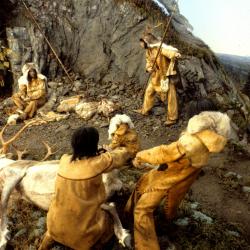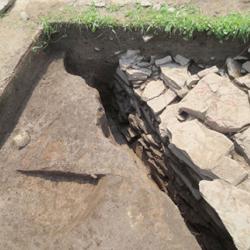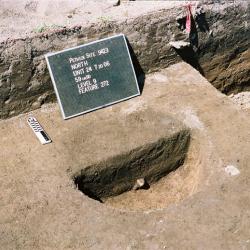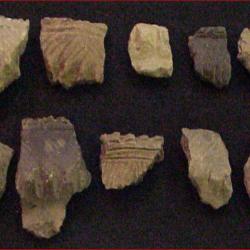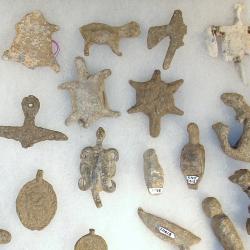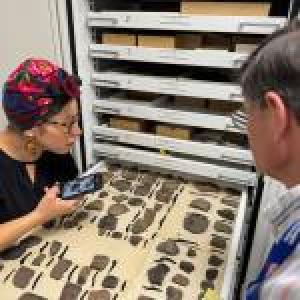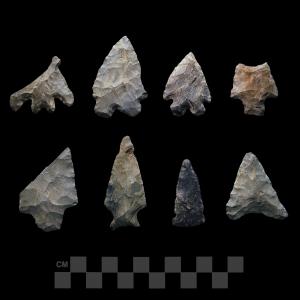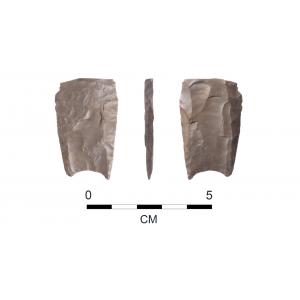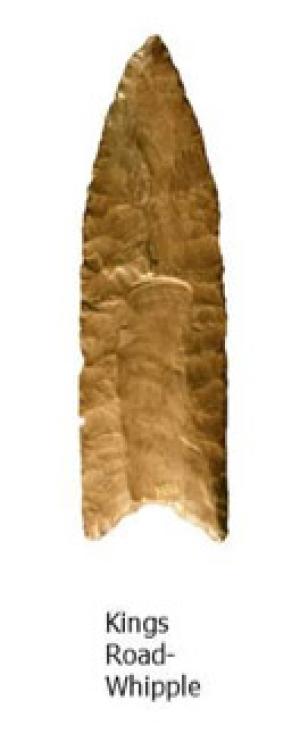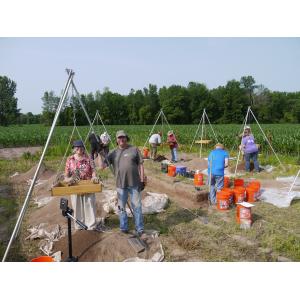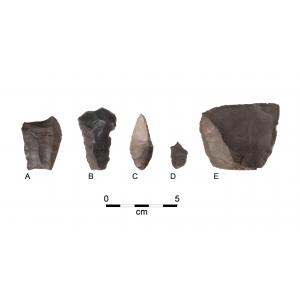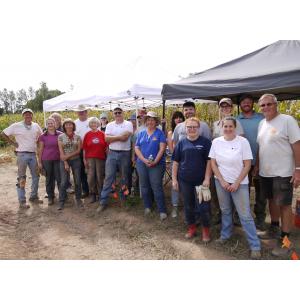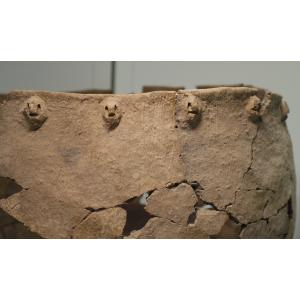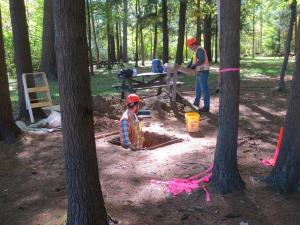Native American Archaeology
Native Americans have been present in New York for 13,000 years. Since the mid-19th century, the New York State Museum has conducted archaeological investigations that have helped to write the histories of Native Americans in the state. The Museum continues that tradition today through field- and collections-based research. Current research is aimed at increasing our understandings of the earliest Native American occupants of New York, between 13,000 and 10,000 years ago; the histories of various agricultural crops and the evolution of agricultural systems some 3,000 to 500 years ago; the ways in which Native American groups settled the landscape and how settlements changed through time 3,000 to 500 years ago; and the ways in which different Native American groups interacted with one another through trade, exchange, and symbolism.

Dr. Jonathan Lothrop
Curator of Archaeology jonathan.lothrop@nysed.gov
My research is focused on how and when Indigenous peoples migrated into what we now call New York during the Late Pleistocene or Ice Age and the Early Holocene, between 13,000 and 10,000 years ago, and how they survived initially on the region's subarctic landscapes.
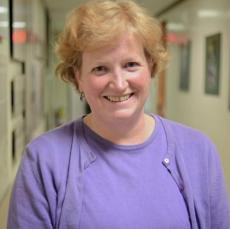
Dr. Christina Rieth
State Archaeologist and Co-Director, Cultural Resource Survey Program christina.rieth@nysed.gov
My research focuses on the ways that prehistoric groups interacted with their local environment and the role that such interaction had on the settlement and subsistence strategies of New York’s Late Prehistoric (A.D. 700-1450) occupants.
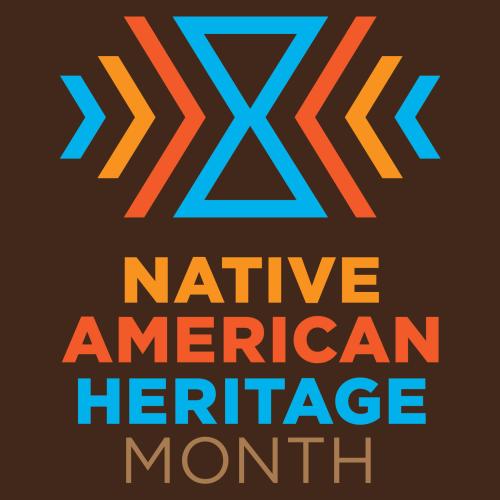
Join the NYSM as we celebrate and honor the cultural heritage, diverse histories, and continuing contributions of Native People.
News Articles
Unearthing Ceramic Technology and Pottery Traditions at the Mohawk Garoga Site
Published October 23, 2024 | Native American Archaeology
The Haudenosaunee (meaning “People of the Longhouse” or Iroquois) are famous for their pottery. In the 16th century, they produced thin walled, finely tempered pots of various sizes with well-defined collars decorated with incised geometric patter...
Coupling Indigenous Artwork and Ancient Artifacts
Published January 22, 2024 | Native American Archaeology
The New York State Museum maintains its extensive material collections for the benefit of individuals and communities across the New York region and beyond. Increasingly, indigenous scholars, artists, and community members are accessing the NYSM's...
The McVaugh Donation: Important Collections Come in Small Packages
Published November 28, 2022 | Native American Archaeology
Over the years, the NYSM has received donations of very large archaeological collections numbering hundreds of thousands of specimens—but small collections can also be important. One such donation, modest in size but rich in content, was...
Science Tuesday: Late Ice Age Stone Point
Published July 25, 2022 | Native American Archaeology
Located in the middle reach of the Hudson River, Magdalene Island (Dutchess County, NY) has long been known to archaeologists as a location visited by ancient indigenous peoples. Until now, stone tools and other artifacts curated at the NYSM sugge...
Science Tuesday: Clues for dating Paleoindian sites in New York State
Published September 21, 2021 | Native American Archaeology
How old are the oldest archaeological sites in New York? Put another way, when did Native Americans first people the region that we now call New York? These questions are difficult to answer because there are no radiocarbon-dated sites of these ea...
The McVaugh Donation: Insights on Hudson Valley Indigenous History
Published November 2, 2020 | Native American Archaeology
Over the years, the NYSM has received donations of some very large archaeological collections numbering hundreds of thousands of specimens, but small collections can also be important accessions. Born in 1909, Roger McVaugh grew up on his parents’...
The McVaugh Donation: Insights on Hudson Valley Indigenous History
Published November 2, 2020 | Native American Archaeology
Over the years, the NYSM has received donations of some very large archaeological collections numbering hundreds of thousands of specimens, but small collections can also be important accessions. Born in 1909, Roger McVaugh grew up on his parents’...
NYSM Archaeologists Return for Fifth Field Season at OPS Paleoindian Site
Published April 6, 2020 | Native American Archaeology
In July and September 2019, NYSM archaeologists and volunteers conducted their fifth season of excavations at the OPS Paleoindian site in Madison County. Discovered in 2015, the OPS site has yielded stone fluted points of the Crowfield "style," in...
Owlville Pine South (OPS) Archaeological Site Owners Donate Paleoindian Artifacts to NYSM
Published December 19, 2019 | Native American Archaeology
In June 2015, avocational archaeologists Mike Beardsley and Mark Clymer were surveying for Native American archaeological sites on farm property owned by Tom and Joyce Bush in central New York. Walking across their fields, Mike spied a large scrap...
NYSM Archaeologists Return for Fourth Field Season at OPS Paleoindian Site
Published October 25, 2018 | Native American Archaeology
In September, NYSM archaeologists completed the 2018 excavations at the OPS Paleoindian site in Madison County, New York. The OPS site has yielded fluted points of the Crowfield "style," indicating an early Native American encampment dating to the...
NYSM Receives Donation of James Vieth Artifact Collection
Published October 25, 2018 | Native American Archaeology
From the 1930s through the early 1960s, avid avocational archaeologist Dr. James Vieth collected and conducted test excavations on Native American archaeological sites, most often in Rockland County, southeastern New York. His son, James Vieth Jr....
Archaeological Discovery at Lake George
Published December 3, 2013 | Native American Archaeology
New York State Museum archaeologists have identified archaeological remains associated with a small Early Archaic camp dating to approximately 8,000 B.C. along the shore of Lake George in Warren County, New York. The site produced bifurcate and Ge...




